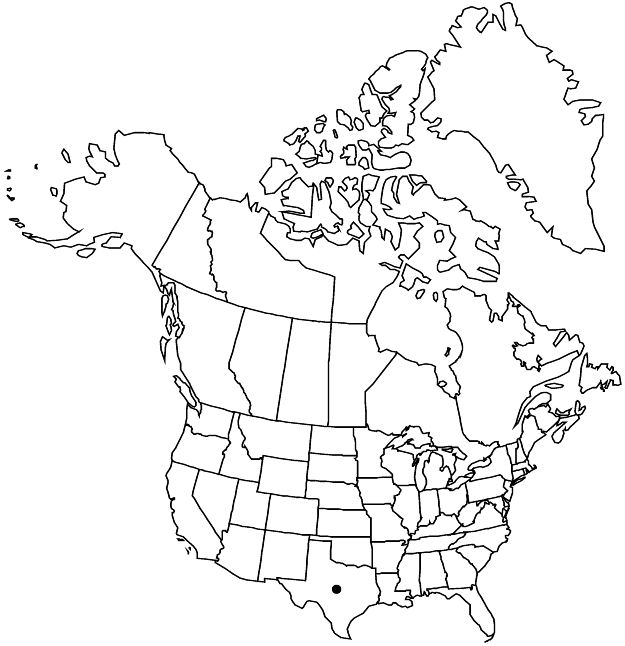Colubrina greggii
Proc. Amer. Acad. Arts 17: 336. 1882.
Shrubs, usually erect, rarely clambering, 2–3 m. Stems zigzag, loosely sericeous to glabrate. Leaves deciduous; petiole 4–20 mm; blade ovate to lanceolate-ovate or elliptic-ovate, (3–) 4–12 [–23] cm, herbaceous, base rounded to shallowly cordate, margins serrulate, teeth 50–100 per side, villous-tufted, apex obtuse to acute or barely acuminate [acuminate], abaxial surface persistently tomentose-sericeous at least among veins, adaxial surface sparsely strigose; pinnately veined, secondary-veins 4–5 (–6) pairs, arcuate, basal pair usually more prominent. Inflorescences thyrses, (10–) 20–40 [–80] -flowered; peduncles 5–20 mm; fruiting pedicels 5–10 mm. Capsules 8–10 mm.
Phenology: Flowering Feb–Mar.
Habitat: Remnant Sabal palm groves, shrublands.
Elevation: 0–10 m.
Distribution

Tex., Mexico (Coahuila), Mexico (Guanajuato), Mexico (Hidalgo), Mexico (Nuevo León), Mexico (Querétaro), Mexico (Tamaulipas), Mexico (Veracruz)
Discussion
Colubrina greggii is known in the flora area only in Cameron County. These plants and those in northern Tamaulipas have sparser foliar vestiture than those elsewhere in the range. The Texas plants also have leaves with obtuse to acute or barely acuminate apices, in contrast to the more typical acuminate apices over the rest of the range.
Colubrina greggii var. yucatanensis M. C. Johnston (southern Mexico and Central America) and C. greggii var. angustior M. C. Johnston (east central Mexico) both have been treated at specific rank (G. L. Nesom 2013).
Selected References
None.